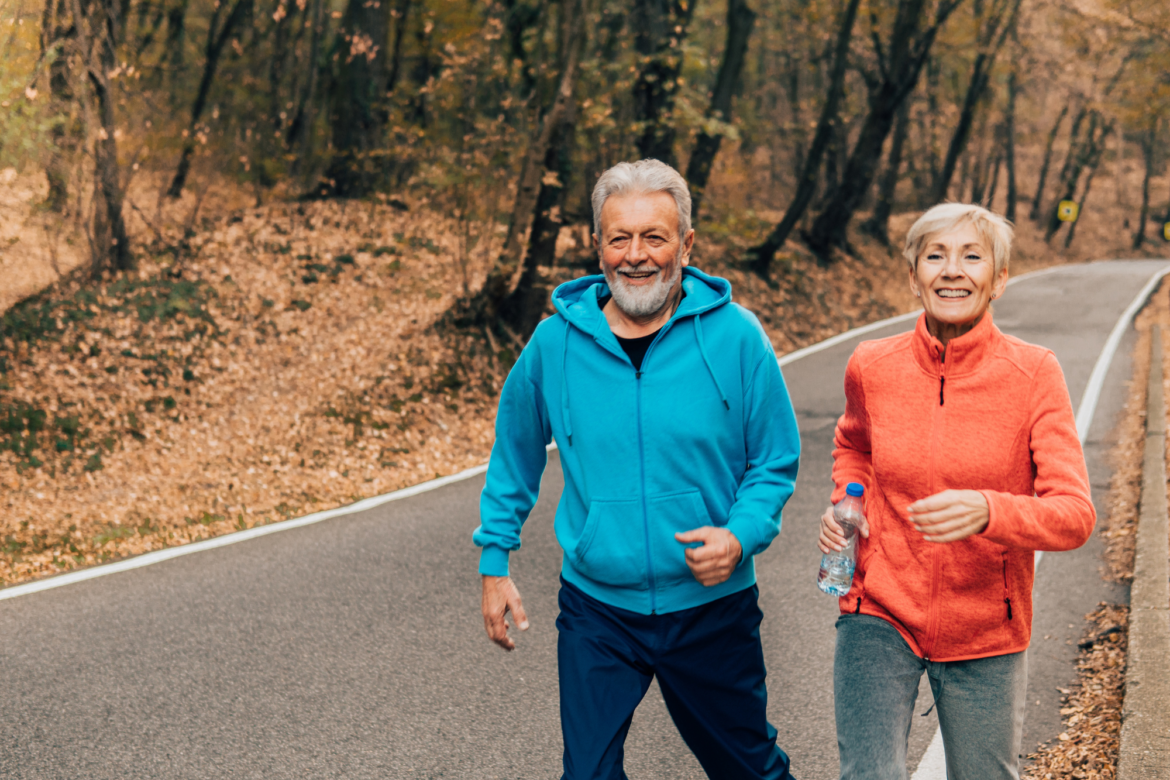Jogging has no age limit
Jogging is an enjoyable exercise with many benefits, such as improved cardiovascular health, increased mobility, stronger bones, better endurance, and more energy. Some myths suggest that running can damage the joints and cause arthritis. In reality, activities such as walking and jogging, which load the joints, actually strengthen the bones and can slow down the progression of osteoarthritis. Learn how jogging after the age of 65 can work for you.
Whether you’re just starting to jog for the first time or used to when you were younger and want to start again, the following tips can help you ease into it and succeed.
1. Consult your PCP
Ensure that you have no health concerns, such as cardiovascular issues, which could affect your ability to participate.
2. Start small and slowly build-up
The standard recommendation is to complete 30 minutes of exercises that increase your heart rate daily. Here are some ideas on how to reach 30 minutes through a combination of low and moderate-intensity cardiovascular activities:
a. 10 minutes brisk walking — 10 minutes jogging — 10 minutes brisk walking
b. 10 minutes brisk walking– 15 minutes jogging– 5 minutes walking
c. 15 minutes jogging — 5 minutes walking — 10 minutes jogging
d. 5 minutes jogging 5 minutes walking. Repeat x 3
Find what works for you and gradually work up to 30 minutes of continuous moderate-high intensity jogging.
3. Warm-up, cool down, and hydrate
Always take time to warm up and cool down. 5-10 minutes of dynamic stretches before jogging and 5-10 minutes of walking after your workout helps the body appropriately respond to the higher demands of jogging and recover better. Even though you will be tired after going for a jog, it’s important to not sit down right away until your heart rate has time to decrease. Drink plenty of water both before and after exercising so your body can properly recover and replace the liquids that were sweated out during your exercise.
4. Safety first
Run in well-lit areas. Try to avoid uneven surfaces such as crushed gravel on an outdoor path. Always let someone know where you are before running or, better yet, run with a buddy. It’s also important to have a good pair of shoes that are comfortable, supportive, and not too loose or too snug.
5. Strengthen to Avoid Injury
While running offers a variety of benefits, it also places great demands on your body. To avoid injury, make sure you are also spending some time strengthening your hips and glutes. The following simple exercises can get you started and are great to do 3 sets of 10 reps, 3 days weekly.
a. Bridges
Lay on your back with your knees bent. Lift your hips toward the ceiling, squeeze your glute muscles together, and slowly lower your hips back down. Repeat
b. Standing Hip Abduction
Stand on one leg while holding a counter or sink. Lift your other leg straight out to the side, keeping your toes pointed forward. Lower your leg back down and repeat on both sides.
c. Sit to stands
Stand up from a chair without using your arms to push off. Sit back down very briefly, then stand back up. Repeat this sequence.
6. Consult your PT
If you want to improve your mobility and strength, work with a PT to reach your fitness goals and stay active as you age! Resistance exercises to improve leg strength and stretches to reduce stiffness can enhance your ability to jog more easily. Regular exercise improves overall fitness and can lead to an improved quality of life with aging.
Make your appointment today to get your body ready to run. Jogging after the age of 65 can be great for the body and mind.

